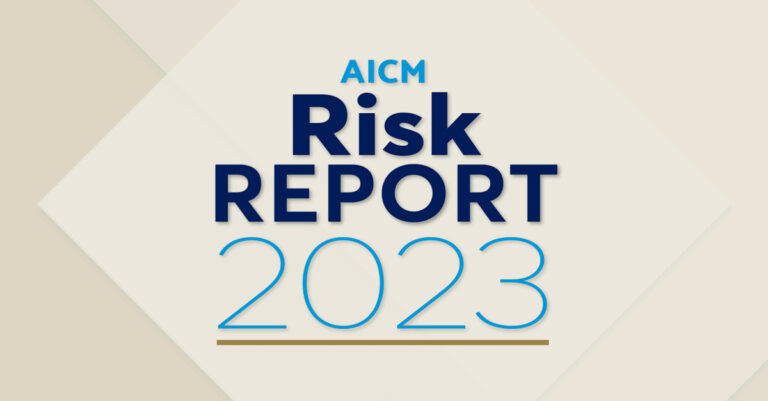
CREDIT INSIGHTS
Unfair preferences – creditor’s defence of not suspecting insolvency

Just because a liquidator asserts you have received an unfair preference, does not necessarily mean you have or that there are no potential defences available to you.
The Corporations Act 2001(Cth), enables liquidators in certain circumstances to claw back payments made by a debtor company to an unsecured creditor where the payment was made to the creditor during the relation back period. Commonly, the relation back period for a non-related creditor is the six months before the filing of the winding up application where the court appoints the liquidator to wind up the debtor company in insolvency.
For a creditor who has, after some delay and follow-up of a debtor, received overdue payments from the debtor, or where there is still an outstanding debt, it is galling to receive a letter from a liquidator demanding the refund of an alleged unfair preference. The most common way of defending a liquidator’s unfair preferences claim is to rely upon section 588FG(2) of the Corporations Act; commonly called the ‘good faith defence’.
Whether a creditor can successfully rely on the defence will depend on the specific facts and circumstances of the creditor’s dealings with the debtor company.
Just because a liquidator asserts you have an unfair preference, does not necessarily mean you have or that there are no potential defenses available to you.
Setting the Scene
To establish a payment is an unfair preference, the payment must be made as part of a debtor creditor relationship. The liquidator has the threshold onus of establishing the debtor company was insolvent at the date of the payment and that the unsecured creditor has received more by receiving the payment than the creditor would receive in the winding up of the debtor company, if they had not received the payment.
Ascertaining the actual date, the debtor company became insolvent can be critical, particularly where the creditor received more than one payment during the six-month relation back period. If the creditor can successfully establish that the payment was received before the debtor company became insolvent, then the payment will not be an unfair preference. It is important to note that unfair preferences are only recoverable from an unsecured creditor. There are a number of issues regarding the question of whether a creditor is a secured creditor and how and at what point of time you assess the value of the security.
Section 588FG(2) Good Faith Defence
If a liquidator does establish insolvency as at the date of the payment, the creditor may be able to rely on the good faith defence. To do so, the onus is on the creditor to prove the following four matters:
- The creditor became a party to the transaction in good faith.
- The creditor had no reasonable grounds for suspecting that the company was insolvent.
- A reasonable person in the creditor’s circumstances would have no reasonable grounds for suspecting that the company was insolvent.
- The creditor provided valuable consideration.
Reasonable Grounds for Suspecting Insolvency
In cases where a creditor is seeking to rely on the good faith defence, most of the evidence is aimed at proving or disproving whether or not the creditor (or a reasonable person in the creditor’s position) had reasonable grounds for suspecting the debtor company was insolvent.
Although the liquidator has the onus of establishing that the debtor company was insolvent at the date of the payment, the creditor will have the onus of showing that the creditor had no reasonable grounds for suspecting the insolvency of the debtor company at the time of receiving the payment.
Depending on the circumstances of the case, a creditor will commonly mount a two-prong attack, disputing that the debtor company was insolvent at the time of the payment and also arguing that, if the company was insolvent, there were no reasonable grounds for the creditor to suspect insolvency.
‘Suspicion’
‘Suspecting’ for the purposes of section 588FG(2) requires a positive feeling of actual apprehension or mistrust without sufficient evidence, as opposed to a mere idle wondering.
The suspicion must also be of actual and existing insolvency (not impending or potential insolvency). This is assessed at the time the creditor became a party to the transaction (normally at the time the creditor received the payment).
If the creditor received more than one payment during the relation back period, a lot of attention will be focused on whether there were reasonable grounds to suspect insolvency at the date of all the payments or for only some of the payments received and, if so, which of the payments.
If, for example, the creditor can successfully argue that there were no reasonable grounds to suspect insolvency until a later date in the six-month period, then any earlier repayments received would not be a preference if the creditor satisfies the four elements of the good faith defence.
Factors Liquidators Rely on
The following are the types of things liquidators generally rely upon to argue the creditor had reasonable grounds for suspecting insolvency at the time of the payment:
- a history of late payment outside credit terms;
- the age of the debts;
- increased aged indebtedness of the account;
- payment arrangements and failure to comply with the terms of the arrangement;
- dishonored payments;
- payment by rounded cheques;
- placing an account on stop credit or reducing the credit limit;
- refusing to supply unless it is on a COD basis;
- forceful or repeated communications from the creditor chasing payment;
- the escalation of the debt recovery process and director involvement in that process;
- inadequate responses from the debtor as to why payment is late or not made;
- a debtor failing to respond to requests to respond;
- the sending of a solicitor’s letter demanding payment or threatening legal proceedings; and
- the issuing of a creditor’s statutory demand for payment.
Observations by the Courts
Courts have repeatedly observed that the question of whether there were reasonable grounds to suspect insolvency depends entirely on the specific facts and circumstances of the particular case.
The courts have observed that:
- it is necessary to have regard to all of the material facts;
- the facts are not looked at retrospectively but are looked at through the contemporary eyes of the parties;
- each factor should be considered in light of the general commercial circumstances prevailing between the debtor company and creditor and the commercial reality of the particular industry;
- undue weight should not be placed on late payment as debts are not always paid on time, even by solvent debtors;
- cash flow difficulties do not necessarily suggest insolvency;
- there is a difference between temporary illiquidity and insolvency;
- where a debtor has a history of tardy payments, delay in payment does not, without more, equate to a suspicion of insolvency; and
- a reasonable ground for suspecting the debtor company is having cash flow difficulties is different to having reasonable grounds for suspecting insolvency.
In the building and construction industry, for example, courts have observed that it is common for payments to be made outside trading terms and this does not necessarily prove a suspicion of insolvency. Each case, however, depends upon its specific facts.
Commonly liquidators will seek to rely upon email communications between the creditor and debtor to argue that the creditor had reasonable grounds to suspect insolvency.
Recent Court Decision
In White & Templeton v ACN 153 152 731 Pty Ltd (in liq) [2017] WASC 52, the following occurred:
- There were email exchanges in which the creditor made persistent and direct enquiries as to when it could expect to receive payment and requesting answers to questions.
- In the email exchanges, the creditor’s director used tactics such as exaggerating the extent to which the creditor itself was under pressure from its own bankers to ensure the debtor paid the outstanding invoices.
- Phone calls were not returned by the debtor, resulting in the creditor sending emails complaining about the failure to return calls and ratcheting up the pressure.
- The creditor’s director gave evidence regarding the conduct of the account, his understanding that there were no external sources indicating any fundamental difficulties with the debtor company’s project, that there was unmet demand for the building project, and that there was a well-known company with extensive financial resources ‘backing the project’. He stated that he believed the delay in payment was due to the debtor’s poor contract administration and that the debtor at all times had access to funds to make payment.
- It was on this basis that the creditor felt that putting pressure on the debtor to obtain payment was warranted.
The evidence of the creditor’s director was material to the Court’s decision.
The Court held as follows, after considering all the facts:
- Given the background to the contract and all the matters known to the creditor’s director at the time, he would not have suspected the debtor was insolvent.
- It was evident that there was a degree of bluster in what the creditor’s director had to say to the debtor. He had no hesitation in exaggerating and ratcheting up the pressure on the debtor.
- The creditor’s director was an honest witness who had been in project management for many years. It is a hard, ruthless business.
- Although the creditor’s director exaggerated the extent to which the creditor was under pressure to obtain payment, cashflow is everything and extracting money from creditors is essential to survival.
- Threat and hyperbole do not, in that environment, necessarily translate to a suspicion of insolvency. No doubt it can do, but intemperate language is not, by itself, enough.
Although the liquidator in White sought to argue that the emails demonstrated an inevitable suspicion of insolvency, the creditor’s evidence was to the contrary.
White demonstrates that courts will consider the specific factual circumstances of the case, which will be a matter of evidence and cross examination.
As a yardstick for ascertaining whether a ‘reasonable person in the creditor’s position’ would suspect insolvency, courts have clarified that a ‘reasonable person’ in the sense of section 588FG(2) is a ‘reasonable business person’ in the circumstances of the case.
In White, the Court found, after looking at evidence as a whole, that the creditor had no reasonable grounds to suspect insolvency and no other hypothetical individual slotted in to the circumstances as they existed, would have suspected insolvency.
The decision in White highlights the conflict between a creditor managing its cash flow by chasing creditors for payment through, for example, email communications, and the risk that the payments received may be held to be an unfair preference.
As always, it is prudent to be circumspect in your email communications. Sometimes it is better to pick up the phone.
When a liquidator demands payment for an alleged unfair preference, it not always the case that a creditor needs to pay up.
In certain circumstances, a creditor may be able to rely on the good faith defence. In considering this defence, the courts look at the specific facts and circumstances of the case.
It is important to note that the good faith defence is only one of the potential defences a creditor may be able to rely upon to resist an unfair preferences claim.







